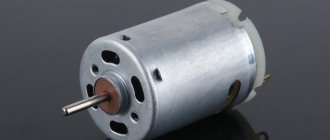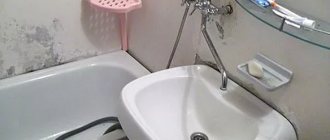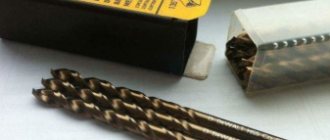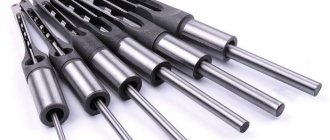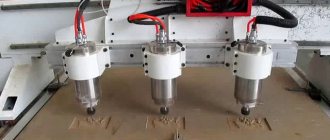Granite stone is a natural material, during the processing of which certain rules must be followed. The peculiarity of the material is that it is fragile and hard at the same time. In order to properly process a slab, you need to know how to drill granite, what are the methods and rules for drilling this non-metallic material. With this knowledge, you can drill without damaging the stone or compromising its integrity.
How to drill granite - basic rules
Holes in granite stone are made only at the first or second speed of the power tool. The rotation speed of the granite drill (the number of revolutions per 1 minute) is set depending on its size (diameter):
- For a drill with a diameter of 6 mm, the rotation speed is 2000 rpm;
- For a drill whose diameter is 12 mm – 950 rpm;
- For a drill diameter of 20 mm, 700 revolutions should be performed in 1 minute.
As the diameter of the crown (tubular drill) increases, its rotation speed decreases.
Beginners who do not yet know how to drill granite are recommended to practice beforehand. To do this, you can use a small piece of granite stone that was rejected or simply not needed.
Marking of a polished granite slab is done using masking tape, which is first glued to the material, after which the drilling locations are marked on it.
It will not be possible to make pencil marks directly on the slab - the pencil simply will not leave marks on the polished surface of the stone. This method is quite suitable for porcelain stoneware, but not for natural granite stone.
There are the following methods for drilling granite stone:
- The drill is positioned at a slight angle to the plate, after which a test groove is drilled. Next, the drill is smoothly adjusted to a perpendicular position. This is an important rule, failure to comply with which will result in the crown dangling on the polished surface of the material and not moving deeper into the slab.
- Inaccurate centering of the drill on granite and marble, as well as a lack of practical experience on the part of the person doing the drilling, can result in the polished slab being scratched. You can avoid this by first making a hole in the unnecessary granite cuttings. A precisely made test hole will serve as a template for drilling holes already on the main plate.
Granite and basalt are the hardest stones on our planet.
Basalt is less common in nature and less used in construction.
Since granite products are more popular and are found everywhere, we have to deal with granite drilling more often.
If you follow the rules, then drilling granite is quite accessible even at home, unless we are talking about a large diameter hole.
The main thing is to follow the instructions and then it will be almost impossible to split granite when drilling or damage the cutting tool.
Recommendations for drilling granite stone, especially Siberian granite.
- To drill granite, a special emulsion is used, or if there is none, then ordinary water. The emulsion is of course more preferable, since it also helps to cool the cutting tool more effectively. Drilling granite stone is usually done with diamond-coated drills or a drill made of carbide metal. A granite slab or any other granite product is a porous material, so if you drill it dry, the pores become clogged with dust and the drilling tool gets jammed, and in this case When drilling, the stone overheats and it begins to crack, so the edges are not even. The emulsion solution helps remove this dust from the drill hole and cools both the stone and the drill. If possible, it is better to make the emulsion supply constant, or by constructing a bath from a plastic material, such as plasticine, you can pour the emulsion into it and thus carry out drilling, as shown in the figure below. Bath for drilling granite
- When drilling granite, be sure to use a drill with a low number of revolutions, preferably from 100 to 800 revolutions per minute. If the revolutions are high, the drill will overheat and its cutting edges will become dull. It must be remembered that the larger the diameter of the required hole, the lower the speed should be; this is necessary so that the cutting edge of the drill has time to extract a sufficient amount of material and does not become dull from overheating. If your drill has a diameter of 4-6 mm, then choose a speed of 1200-1500 per minute, if the diameter of the drill is from 9-12 mm, then set the speed to 800 per minute, if the diameter of the drill for granite stone is 20-25 mm, then It is advisable to have a powerful drill of 1500-2000 W and a speed of about 600 per minute. Be patient, just like stone is not metal and drilling into stone takes time. Keep the drill straight while drilling, otherwise after 1-2 cm the hole will begin to move to the side.
- If you have no previous experience of drilling granite stone, try making a test hole on a stone that you do not need or is damaged.
- As a cutting tool, it can be used as standard drills made of HSS metal with diamond coating or hollow tubular core bits with coating. Crowns for drilling granite Drill bit for granite
How to start drilling granite correctly?
The first method of drilling a granite slab, granite stone.
We start drilling at a slight angle. This is necessary because the material is hard and not completely smooth, so it will be easier for the drill to catch on the protrusion to start drilling. It is impossible to core the drilling site, as the granite may crack or break off at the core site. Next, when the drill catches on the surface and the formation of a hole begins, we level our drill. If you have a special machine that allows you to rigidly fix the drill and the surface when drilling, you do not need such a procedure, and you can safely start drilling at a right angle. Those who have drilled on the surface of smooth metal know that if the drill is not fixed or caught, the drilling site begins to wander, both from the density of the material and from the vibrations and movement of the drill.
Another option is to use an invoice template. This can be a piece of wood, you can use or buy a granite slab in which a hole has already been made. Or use a piece of metal with a pre-drilled hole. This template needs to be fixed on the surface of the granite stone; this can be done with a vice, clamps or other fixing tool. A cooling-lubricating emulsion can be applied to the same surface of the template.
A quick guide to drilling granite slab or granite stone.
- For drilling, you need a drill with a low number of revolutions, ideally up to 600 revolutions per minute, with a power of 1.5 -2 kW, you can use a drill with adjustable speed. We only recommend checking whether your drill can operate for a long enough time at the minimum number of revolutions.
- You will need diamond-coated drills or bits made from hard tool HSS alloy. You can also try drilling with drills with a Pobedit tip (like those used in rotary hammers). Remember that drill bits with pobedit leave a rougher drill mark and may chip or partially chip the granite when drilling.
- The quality of drilling into granite will depend on how well you have secured the tool and the surface of the stone.
- Clamp the drill bit very well in the drill chuck. Do not allow the drill to rotate while drilling.
- Start drilling at the lowest speed, then you can slowly increase the speed if you see that the drill does not start to burn and drilling occurs without noise (whistle, grinding, etc.). Select the optimal number of revolutions.
- If you use a hammer drill, do not turn on the impact mode when drilling a granite slab. The impact mode can be selected only if the drilling is a piece of granite stone and a sufficiently large thickness. Otherwise, the stone will split.
- Make a bath for the emulsion. You can make it from plasticine or similar material. You can buy ready-made. You can use plastic bottles by first cutting off the top part of them.
- Add water or emulsion as it evaporates and is consumed. There shouldn't be a lot of it. The drill should only be wetted where it comes into contact with the granite stone.
- You can drill intermittently.
Set of working tools and materials
Drilling granite stone does not require special and complex equipment. The main tool is an electric drill with adjustable rotation speed. Also during the work you may need:
- Diamond drill of the required size (diameter);
- Clamps (2-3 pcs);
- Masking tape;
- Marker;
- Water.
The diamond-coated drill bit may slip off the polished surface of the material. To avoid this, you need to make a small depression at the treatment site. A regular metal drill will do for this task. It should also be prepared in advance.
Stone drill: drill granite, marble and other types of stone
It is possible to drill a hole in such a durable stone as granite, but it is necessary to thoroughly prepare for this difficult procedure. For drilling, you will need not only a granite drill, but also a set of appropriate tools and accessories. You should also properly prepare your workplace.
Before you start drilling a hole in granite, you should listen to the advice of professionals
Granite Drilling Guide
The granite blank is placed on a flat surface and secured with clamps. To avoid damaging the polished surface of the natural material, wooden planks are placed under the clamps. Masking tape is applied to the places where the holes will be made. After gluing, the center and outline of the future hole are marked on it.
A diamond bit (drill bit for marble and granite) is inserted into the drill. In this case, the central guide is installed in the marked center of the hole. If there is no guide, it is necessary to make a wooden template of the required diameter and fix it on the surface of the slab. It will serve as a guide during the work process.
Drilling technology
Processing of solid materials involves the use of a certain technology. Drilling stones has its own specifics. For example, granite is a very hard and at the same time very fragile stone. When choosing the rotation speed of the tool, you need to proceed from the diameter of the hole being drilled. The larger the diameter of the hole, the lower the required speed.
To get the hole in the right place, you need to make a small groove by tilting the rotating drill to the side.
During drilling, water supply must be mandatory. Water, firstly, protects the cutting edges of the diamond drill from overheating, and, secondly, washes away the sludge. Before starting drilling, in order to get the hole in the right place, you need to tilt the rotating drill to make a small groove. After this, the drill is leveled, and even drilling begins in this place. This is necessary so that at the very beginning the drill does not move from the given point.
To avoid damaging the edges of the hole, the drill must be well centered. The drilling object must be on a flat surface and well secured. Unlike concrete, drilling granite using perforation mode is not advisable. It is very fragile and can crack if subjected to shock.
When drilling granite, you should proceed from the following parameters: hole diameter and drill rotation speed. With a hole diameter of 6 mm, the rotation speed should be 2000 rpm. With a hole of 12 mm, rotation speed of 950 rpm. If the hole is 24mm, the rotation speed should not exceed 700 rpm. Such data was obtained experimentally and is the most optimal.
In some cases, granite needs to be reinforced. This need arises when a tabletop is made from a relatively thin sheet of granite. A large load on the surface of the table can break it. To increase the strength of the granite slab, it is reinforced with steel rod.
A smooth groove is made on the inner surface of the slab using a grinder and a diamond wheel. The depth and width of the groove should be 1 mm larger than the steel rod. After removing dust from the groove, a steel rod is placed in it. The rod placed in the groove is filled with superglue. After the glue hardens, the strength of the reinforced granite slab will be increased several times. This has also been established empirically.
One important part of the laboratory is the furniture. Each laboratory in which chemical, biological, and medical research will be carried out must have appropriate furniture. Special tables, cabinets, cabinets, tables and cabinets - all this is an integral part of the laboratory.
For a person who has virtually no idea of how the process of working in a laboratory occurs, it is completely unclear why an ordinary table or chair is not suitable for this. But in fact, furniture plays a huge role in the laboratory, which is why household furniture cannot be in the laboratory.
Replacement for diamond tools
How to drill into granite if you don’t have a diamond-coated drill? In addition to a diamond drill, holes in granite can be made using pobedit drills, diamond dust or corundum. These tools are inferior in quality to a diamond drill and make the drilling process longer, but with their help you can achieve the desired result.
To make a hole in a granite slab using corundum, diamond dust or ground pobedite, you need a tube made of copper or brass and fixed in a drill. The diameter of the hole marked on the slab is protected by a side that is 4-5 mm high and made of plasticine or putty with quick-drying properties.
Abrasive material is poured inside the side and drilling is performed with a tube at a minimum rotation speed of the drill. During the drilling process, you need to add water from time to time.
To work independently with granite stone, you must have the appropriate skills and tools, and perform the work carefully and accurately. To understand how to drill through granite without damaging it, it is recommended that you first practice drilling using scraps of granite.
How to drill a hole in a sink or sink Practical tips
When purchasing a new sink, the question often arises is how to drill the hole. Answers to this and related questions can be found in this article.
How to drill a hole in a ceramic sink
When does the question arise? Sinks without a hole were installed in Soviet bathrooms where there was one faucet for the sink and bathtub. Recently, this option has been used less and less, but sometimes, during budget renovations, apartment owners want to save on buying a new sink.
Sink without tap hole.
And so, you have a sink that has no hole. Working with ceramic sinks may seem like a lot of work, but you can do it if you follow the tips below. It's simple.



